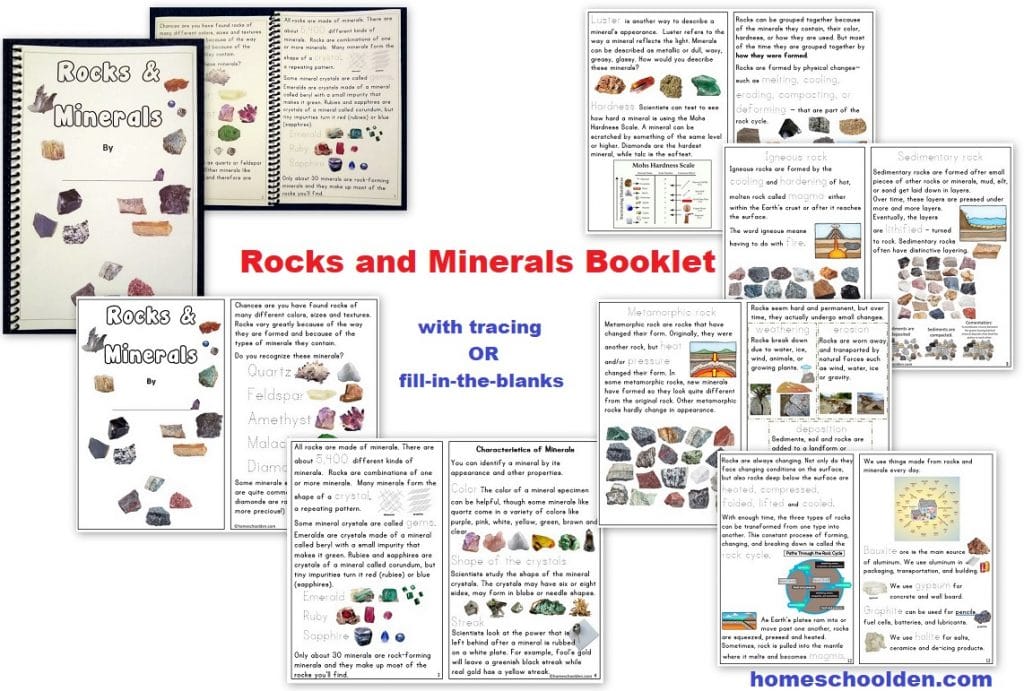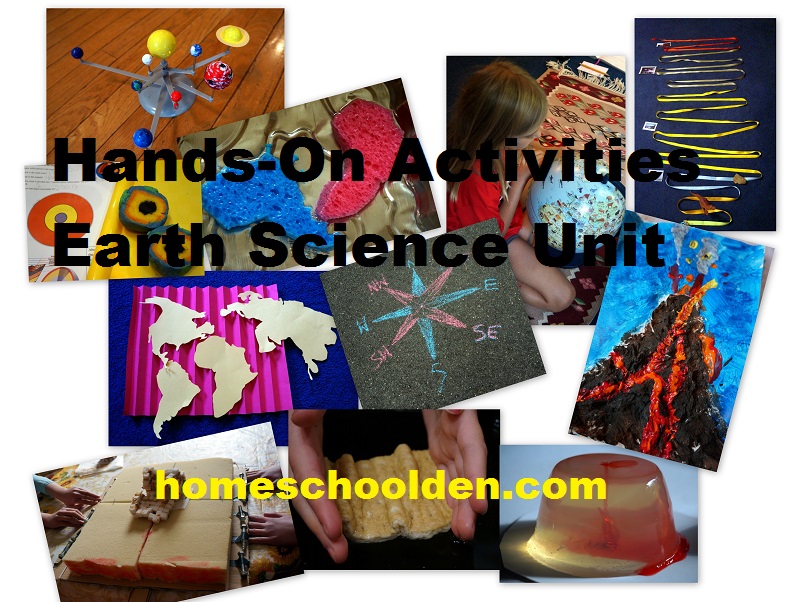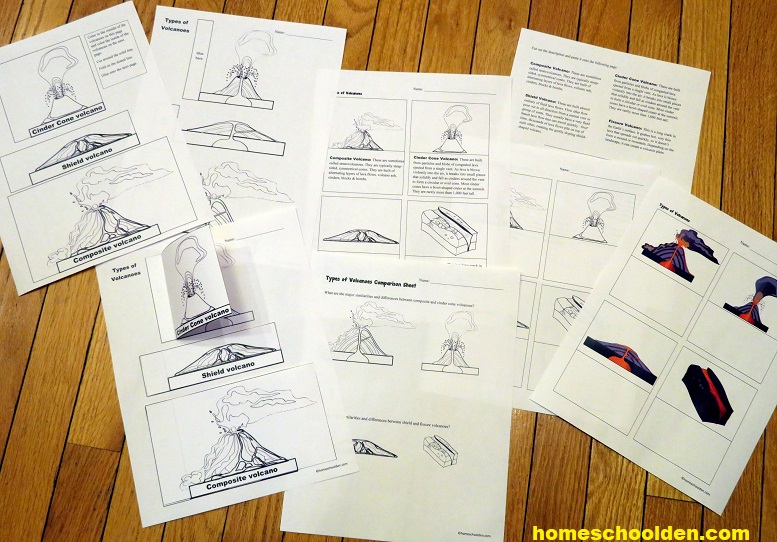Rocks and the Rock Cycle: Sedimentary, Metamorphic and Igneous Rock Activities
Today, I’m going to share some of the hands-on activities and the free rock cycle worksheets that go along with our unit.
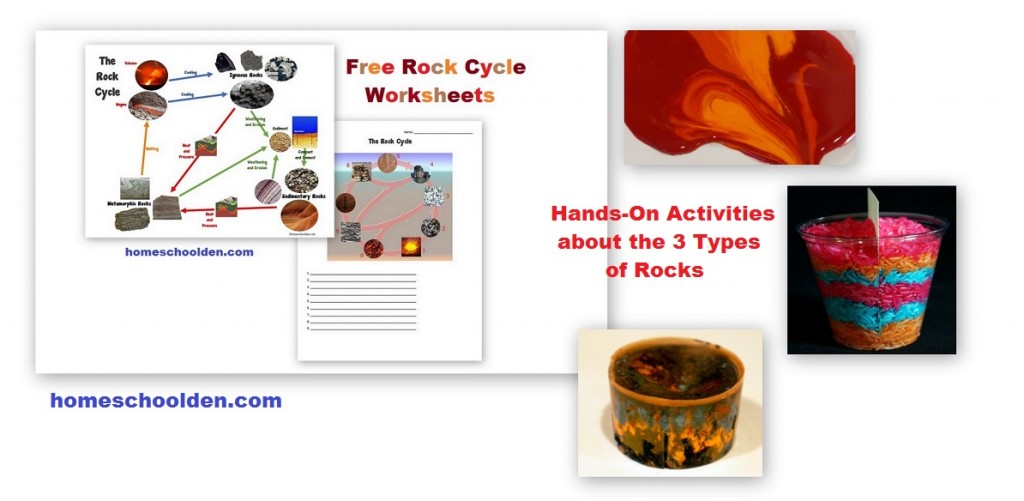
As we started our unit, we read several books about rocks together.
These books have some really fun ideas:
We really loved Explore Rocks and Minerals!: 25 Great Projects, Activities, Experiments when we did this unit a number of years ago. (affiliate link)



Sedimentary Rock Activity:
Our first activity was about sedimentary rocks.
We took a bag of dried rice and colored it with food dye. (The rice was uncooked.)
We used a clear, plastic cup (though a glass jar would work just fine too). I cut an index card so that it would fit down into the cup (because the plastic cup was wider at the top).


We read a book specifically about sedimentary rocks called How Do Water and Wind Change Rocks: A Look at Sedimentary Rocks (affiliate link) which does a good job of explaining how sediment forms and washes away. Then explains how that sediment turns into rock through pressure/compacting and cementing. It goes on to talk about how wind, water, and weathering affect sedimentary rocks.
One of the days while we were reading, the girls “made” their own sedimentary layers out of different colored play dough. Then, they took a spatula and applied “pressure” to create their sedimentary rock.
Igneous Rocks:
Next, we went on to talk about igneous rocks. We read How Do Volcanoes Make Rocks: A Look at Igneous Rocks. (affiliate link)
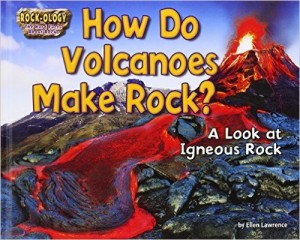
We talked about how igneous rocks can form above ground (when a volcano erupts) or below ground, when magma cools under the surface.
The activity we did for igneous rock was to take pieces of red, bright yellowish-orange, orange crayons and pile them on top of one another on a paper plate. Then, we put them in the microwave for 3 or 4 minutes. We brought them out and then ED moved the plate around to watch the colors swirl. The crayons cooled quickly… just as magma cools as it flows out onto Earth’s surface. 🙂
Metamorphic Rock Activities:
Next, we were on to metamorphic rocks. We read Baking and Crushing: A Look at Metamorphic Rocks (affiliate link) which did a really good job explaining how sedimentary and igneous rock changes into metamorphic rocks through heat and/or pressure. It has good illustrations that show how magma can ooze into cracks and heat the rocks around it. It also explains how earth’s movement affects rocks. It has pictures of some of the rocks that change: sandstone (changes to) – quarzite; shale to slate; basalt to schist, etc.

ED applied pressure first with her thumb… and then with a hammer to “form” sedimentary rock.






In the packet below, there are several pages about the rock cycle. Recently, I made an entirely new Rocks and Minerals Packet that is well over 100+ pages. It includes notebook pages, worksheets and dozens and dozens of amazing images.
These pages are still free to download:
Rock Cycle Worksheets – Sedimentary Metamorphic Igneous
Be sure to check out our new Rocks and Minerals Unit!

We have studied rocks and minerals several times over the years. We have a number of different rock sets and I highly recommend that you have rocks on hand for your studies.
We got a rock kit with different samples of sedimentary, metamorphic and igneous rocks. We got the small version (with 15 rocks): American Educational Introductory Rock Collection (affiliate link).
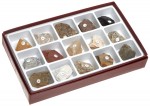
 New Rocks and Minerals Unit!
New Rocks and Minerals Unit!
The material above was made many years ago when my kids were quite little. I have made a huge new 100+ page Rocks and Minerals Unit if you are interested! See details here.
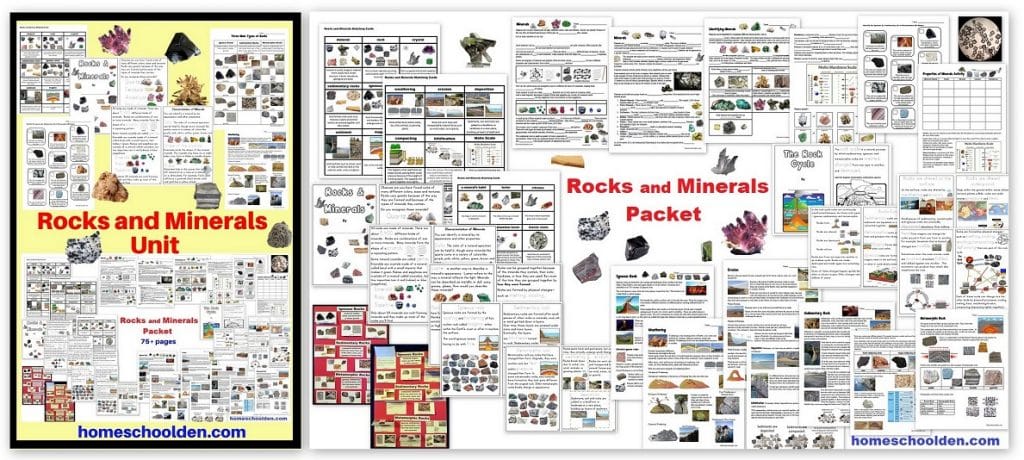

$7.99 New! Rocks and Minerals Unit 100+ pages
More details can be found here: Rocks and Minerals Packet or at the Earth Science BUNDLE page.
Don’t forget to check your PayPal email account for your download link! Our packets are PDF digital downloads. If you have any questions or problems feel free to email me or check out the FAQ.
This unit is included in our Earth Science BUNDLE. More details about the Earth Science Bundle options here.
Here are some of the Worksheets, Notebook Pages and Activities included in the new Rocks and Minerals Unit:
- Rocks and Minerals Booklet (with tracing)
- Rocks and Minerals Booklet (with fill-in-the-blanks)
- Rocks and Minerals Questions (based on the booklet)
- Rock or Mineral? worksheet
- Minerals Notebook Pages (student fill-in-the-blank pages – teacher pages)
- Identifying Minerals Notebook Pages
- How would you describe the luster? Worksheet or matching cards
- Mineral Observation Lab Activity (we used the Toysmith Minerals Kit (affiliate link) but probably any mineral kit will work!)
- Ores Notebook Page
- Rocks Worksheets on the Three Types of Rocks
- Igneous Rocks Notebook Pages
- Granite – Observation Activity
- Sedimentary Rock Notebook Pages
- Stratigraphy Notebook Pages
- Metamorphic Rock Notebook Page
- Rocks and Minerals Vocabulary Matching Cards
- Rocks and Minerals Vocabulary Review Sheets
- Three Types of Rocks Activity
- Three Types of Rock Lapbook/Interactive Notebook Activity
- Identify the Igneous (I), Sedimentary (S) or Metamorphic (M) Rocks Worksheet
- Rock Observation Lab Page (We’ll use a rock kit by Toysmith that we’ve had for many years, but it really doesn’t matter what rocks you observe. This kit has 12 samples, as does their minerals kit.)
- Rock Cycle Booklet
- Rock Cycle Worksheet
- Rock Cycle Notebook Pages
- Rock Cycle Blank Pages – Posters
- Hands-On Activity Ideas about the Three Types of Rock (starting on page 136)
Disclosure Notice: Please note that some of the links in this post (and in the shared packet) are affiliate links, and at no additional cost to you, I will earn a commission if you decide to make a purchase.
See you again soon here or over at our Homeschool Den Facebook Page! Don’t forget to Subscribe to our Homeschool Den Newsletter. You might also want to check out some of our resources pages above (such as our Science, Language Arts, or History Units Resource Pages) which have links to dozens of posts. Don’t forget to check out Our Store as well. ~Liesl
You might also be interested in our Earth Science Packet: We did a ton of hands-on activities as we studied
- the solar system
- layers of the Earth, Earth’s axis
- compass directions, compass rose, how to use a compass
- Earth’s geologic timeline
- equator, latitude, longitude — Using a globe to determine latitude and longitude
- Pangaea and continental drift
- understanding convection currents
- tectonic plates
- 4 types of mountains
- 3 types of faults
- earthquakes and faults
- volcanoes – volcanic terms, types of volcanoes
- earthquakes and building construction, earthquake shake table
Find out more by visiting this post: Earth Science Packet
You might also want to check out our Layers of the Atmosphere Packet
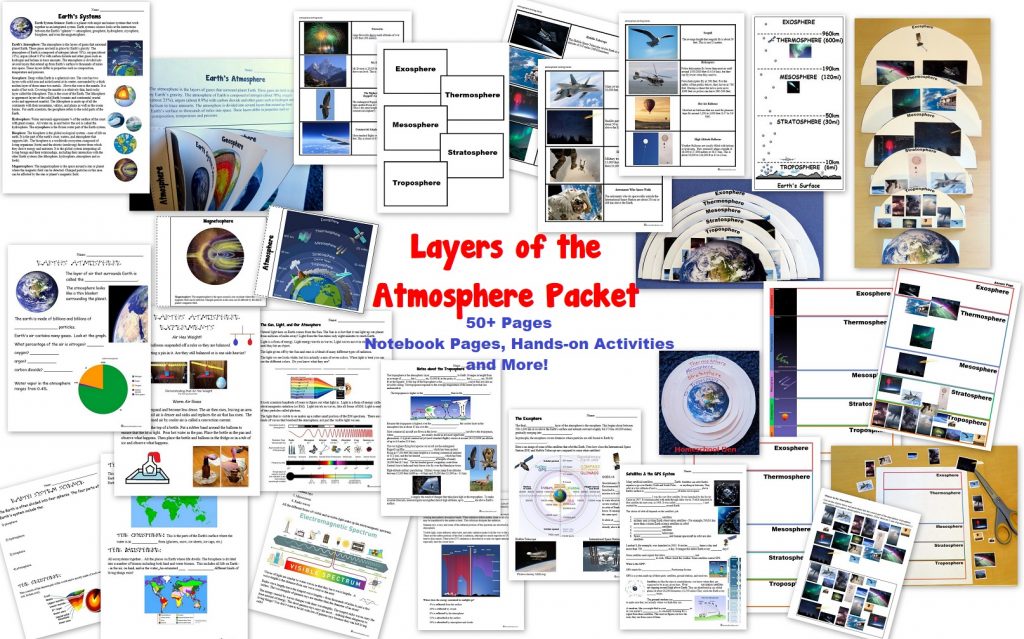

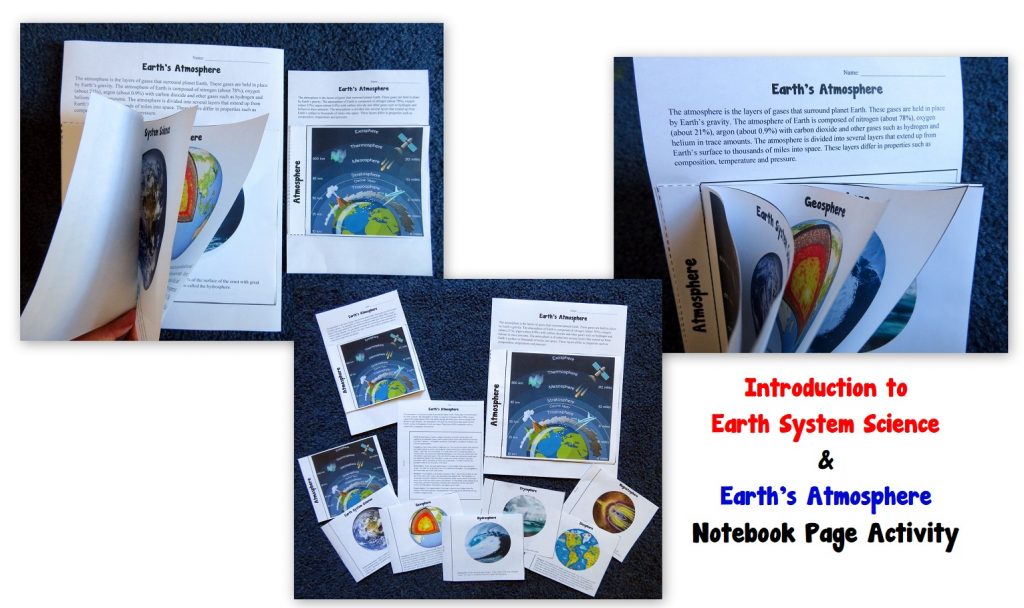

Here are some of the units we have available:
Animal Packet – Animal Characteristics, Vertebrates vs. Invertebrates, Insects vs. Spiders, Animal Tracks and more!

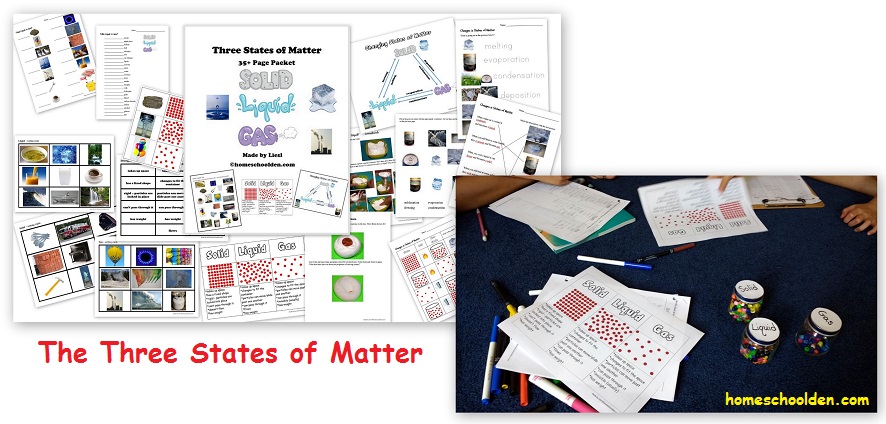
Electricity and Circuits STEM Unit
World Facts & Geographical Features Packet
Do your kids know the 4 largest countries? Which countries have the most people? The longest river? This packet covers basic world and U.S. facts. It also has a section on geographical features and landform words (both the basics like island, lake, peninsula, but also words like atoll, archipelago and so forth). This packet also goes over some of the famous World Landmarks, world deserts and more!
See you again soon here or over at our Homeschool Den Facebook Page! Don’t forget to Subscribe to our Homeschool Den Newsletter. You might also want to check out some of our resources pages above (such as our Science, Language Arts, or History Units Resource Pages) which have links to dozens of posts. You might want to join our free Homeschool Den Chat Facebook group. Don’t forget to check out Our Store as well.

Happy Homeschooling, everyone!! ~Liesl
